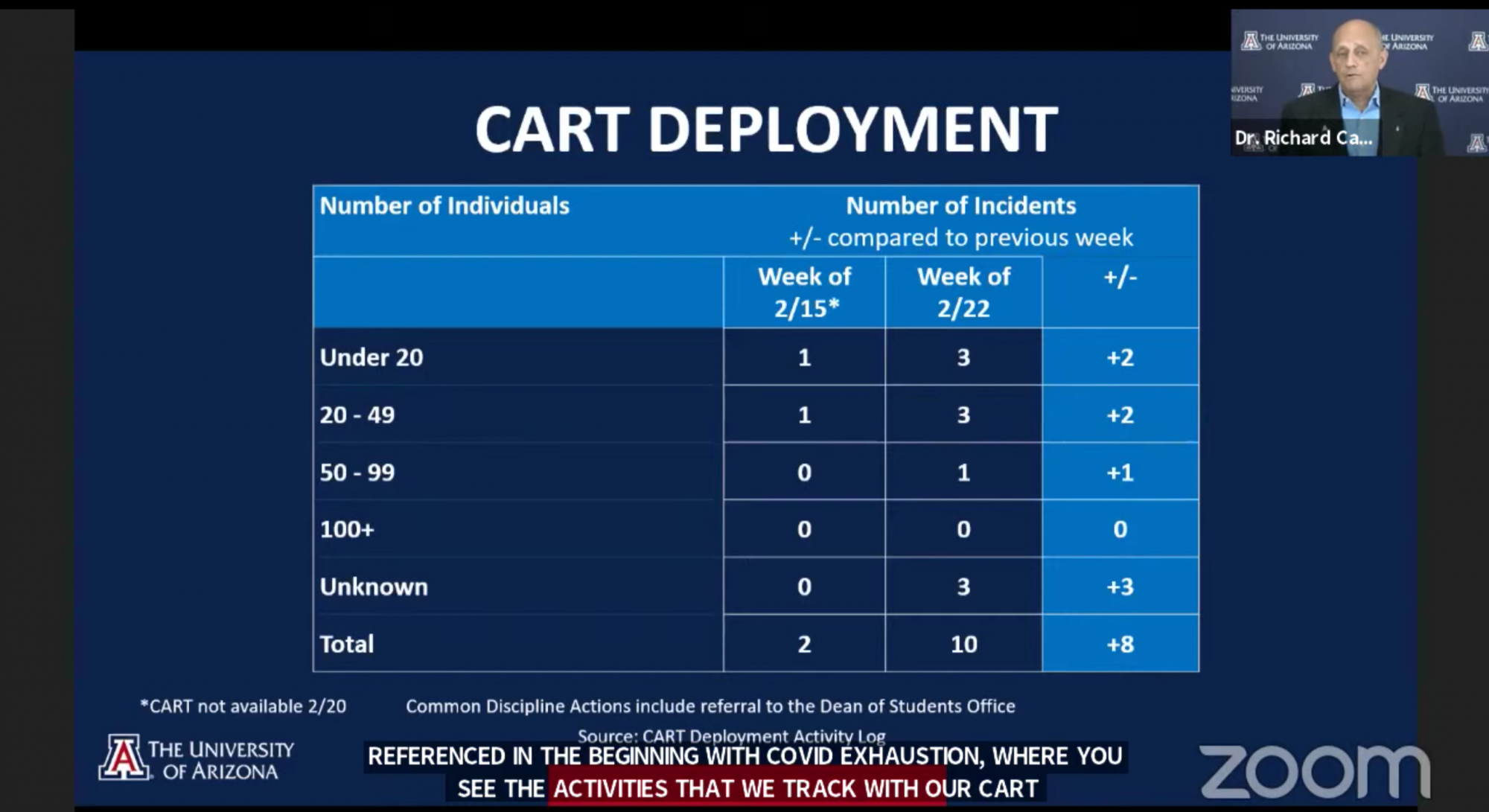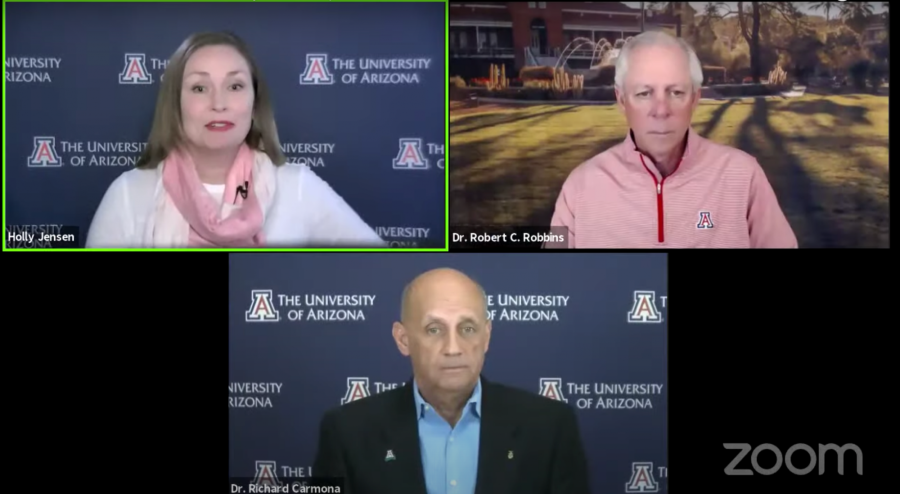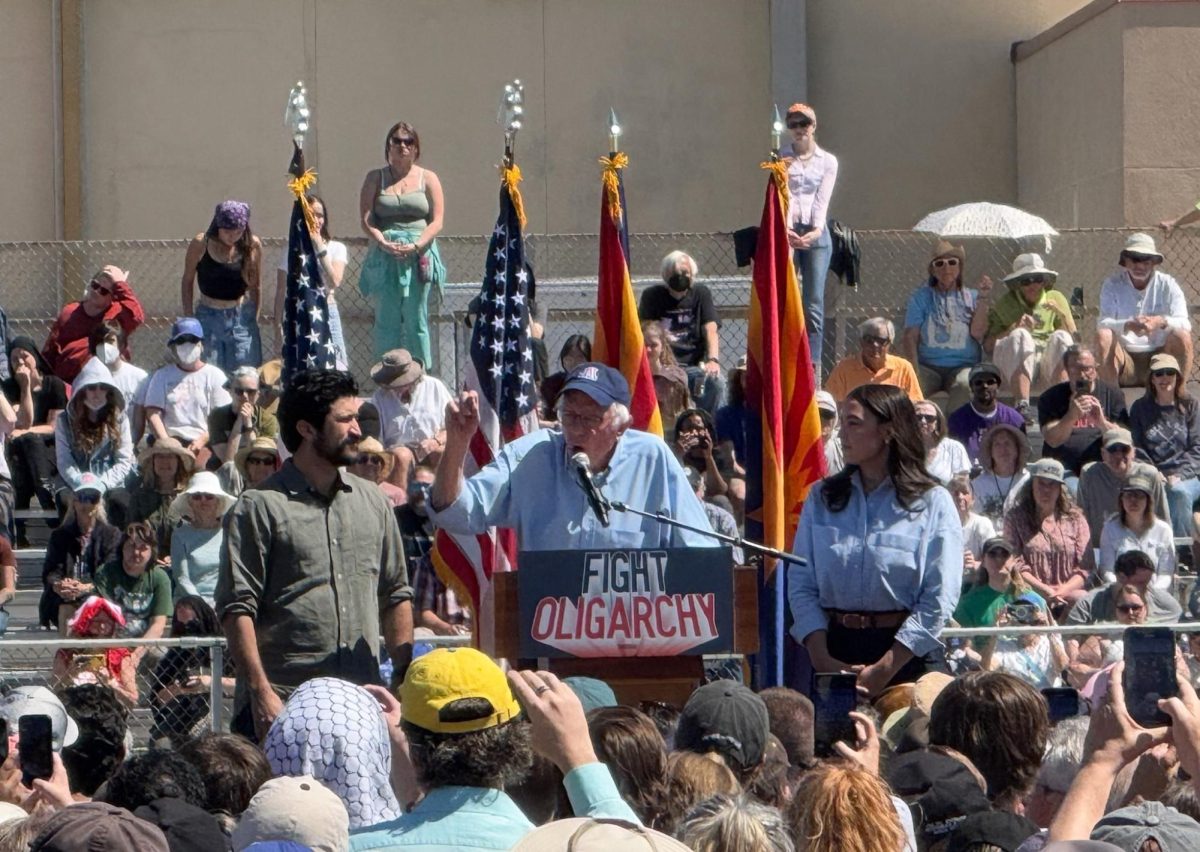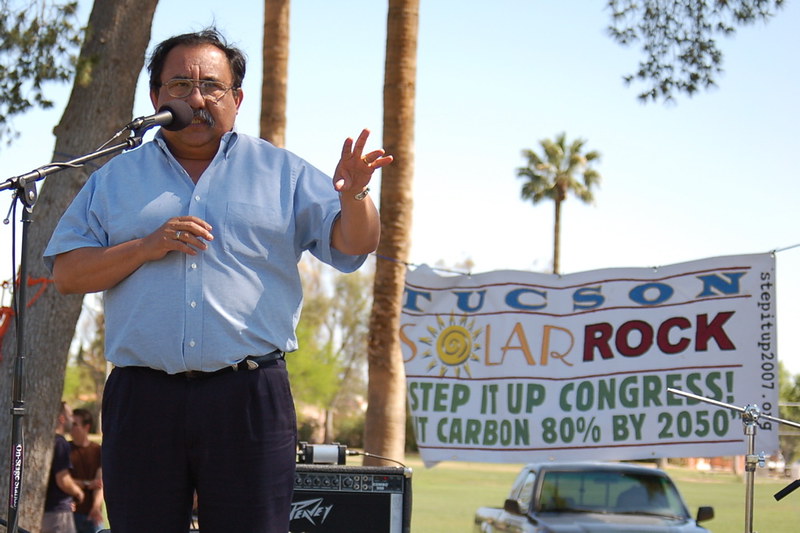The University of Arizona’s COVID-19 virtual university status update team met over Zoom on Monday to discuss vaccine rollout and to provide updates on the recent shooting on campus that resulted in the tragic death of UA student Forrest Keys.
UA President Dr. Robert C. Robbins began by addressing the recent arrest of three suspects in the homicide investigation of Keys’ death. He specifically thanked the UA Police Department and investigators for their work on the case.
In addition to the memorial held by Keys’ family virtually on Saturday, Robbins stated that an in-person vigil is currently in progress to be held on campus. The vigil will be coordinated by Zeta Beta Tau, the fraternity Keys was a member of. Robbins revealed that a scholarship commemorating Keys is also in development.
The task force meeting continued on a somber note, acknowledging Keys’ death as a tragic loss for the campus community.
“Forrest is still a part of our community,” Robbins said. “We hope the light he brought to so many people, which was so clear in the family’s memorial, continues through our remembering him.”
Robbins proceeded to discuss reentry and the UA’s efforts to control the spread of COVID-19. The university remains in Phase 2 of reentry with essential classes of 50 or less continuing with in-person instruction.
Shifting to some promising statistics, the positivity rate from tests administered the week of Feb. 22 through 26 was a “remarkably low” 0.18% according to Robbins. He also noted that the vaccination point of distribution on campus has given over 30,000 doses of the COVID-19 vaccine, with 16.9% of Pima County’s population having received at least one dose.
In further examining the COVID-19 data on campus, task force Director Dr. Richard Carmona noted Pima County’s continual improvement in controlling the spread of COVID-19. He reported the rate of transmission value, reflecting the spread of COVID-19 as 0.58 in Pima County and 0.72 in the zip code associated with the UA.

“We want to stay below 5%, we’re below 1% here. This is extraordinary,” Carmona said in reference to the Rt values. “However, [this is] not a time to become complacent. We have to keep pushing these numbers in the right direction.”
However, Carmona described a troubling trend, COVID-19 exhaustion, as a serious problem facing the campus community. According to Carmona, the CART deployments against large gatherings of students not abiding by social distancing protocols increased by eight from the week of Feb. 15.

Carmona and Robbins proceeded to discuss concerns surrounding the different COVID-19 vaccines becoming available, especially regarding the new Johnson & Johnson vaccine reported as having a 72% rate of effectiveness compared to 95% associated with Pfizer and Moderna.
They noted additional advantages associated with the Johnson and Johnson vaccine including it being a single dose and easier to transport. Carmona ultimately agreed with top medical advisor Anthony Fauci’s statement that Americans should get the first available vaccine they can.
“The best vaccine is the one that you get in your arm today of the three that are out there,” Carmona said.
On the subject of vaccine registration, UA Vice President of Communications Holly Jensen urged patience, indicating that on March 6 additional appointments will be available to schedule through the state system.
The task force proceeded to answer questions, and reporter Megan McNeil from KOLD communicated concerns raised by the Coalition for Academic Justice at the University of Arizona regarding equitable distribution of the vaccine.
Carmona responded by emphasizing that the state controls vaccine allocation. He referred to the notion that the university took vaccines from Pima County as a myth, and emphasized that with an increased supply of vaccines, rural outreach will be a priority.
“This myth has been circulating for some time … never happened,” Carmona said. “I can tell you that we were upfront in these discussions that we want more vaccines but not at the cost of taking from someone else.”
Nick Halsey from CAJUA said equitable distribution is important to the coalition, regardless of whether the university or county distributes them*.
“Along with many local officials, we feel that vaccine distribution will be most equitable if vaccines are also made consistently available at locations that are closer to underserved communities, and not only at the main-campus mega-site,” Halsey said via email. “We believe that the Surplus Property Storefront on 34th St[reet] and the UA Tech Park at the Bridges are two possible UA properties that could be used to achieve more equitable distribution.”
The task force will meet again online on Monday, March 8.
*Editor’s Note: This article has been updated with a statement from the Coalition of Academic Justice.
Follow Hillary Schiff on Twitter








